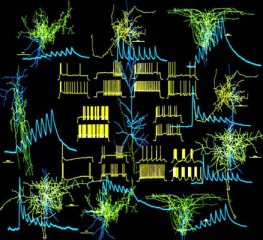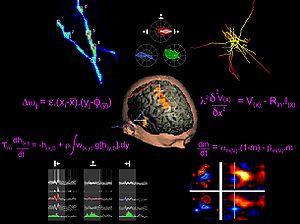 Motivation[]
Motivation[]

(EPFL-LNCM, Lausanne)

(CNRS-UNIC, Gif-sur-Yvette)
Neuroscience is one of the main research topics of this century. The human brain is said to be one of the most complex systems known to science and understanding how it works is as old a question as mankind. Most notably, the brain hides computational principles that exhibit such amazing properties like energy efficiency, fault tolerance, compactness to name only a few of them.
To understand the basic concepts behind these properties is essential for two reasons: The life-science point of view and the information-technology point of view.
- The first point of view has potential medical applications to cure brain and mind related diseases or even the longer-term goals to work towards neural prosthetic devices and artificial sensory organs.
- The second point of view could lead to new computing devices radically different from contemporary IT technology. Such devices could provide support for complex decision making processes like the ones in human beings.
Aiming for a better understanding of biological nervous systems, there remains, however, one fundamental problem: A typical neural microcircuit in the human brain is a highly complex recurrent network, composed of a huge number of neurons and synapses of diverse types that participate in equally diverse processes with time constants covering 13 orders of magnitude, from microseconds to years. These processes include, e.g, short term plasticity, long term learning, and development. Such neural microcircuits succeed in implementing massively parallel computations, where the inputs consist of multi-modal input streams generated by sensors recording a rapidly changing environment.
Given the complexity of the brain and its inherent dynamics, it is -- at this time -- still open whether our questions about the brain will ever be answered completely.
Please visit also the other links in this section to learn more about
- how adequate Models of the brain can help understanding its underlying principles
- and how dedicated Neural Hardware can speed up the implementation of such models.



